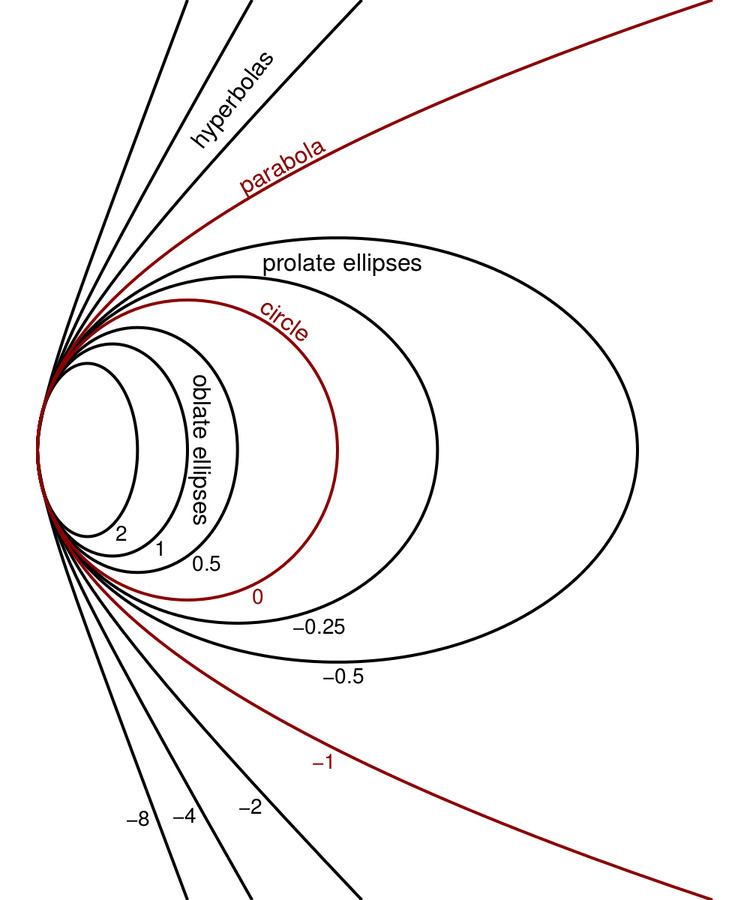 | ||
In geometry, the conic constant (or Schwarzschild constant, after Karl Schwarzschild) is a quantity describing conic sections, and is represented by the letter K. For negative K it is given by
where e is the eccentricity of the conic section.
The equation for a conic section with apex at the origin and tangent to the y axis is
where K is the conic constant and R is the radius of curvature at x = 0.
This formulation is used in geometric optics to specify oblate elliptical (K > 0), spherical (K = 0), prolate elliptical (0 > K > −1), parabolic (K = −1), and hyperbolic (K < −1) lens and mirror surfaces. When the paraxial approximation is valid, the optical surface can be treated as a spherical surface with the same radius.
Some non-optical design references use the letter p as the conic constant. In these cases, p = K + 1.
